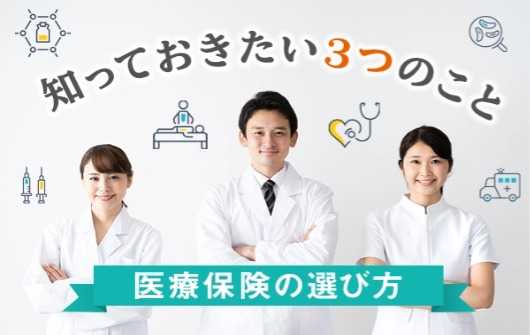医療保険の選び方と比較ポイント|見積もり・保険料・おすすめ情報
Recognizing and Managing Thyroid Eye Disease (TED) Early
Thyroid Eye Disease (TED) is an autoimmune condition that affects the eyes, often linked to thyroid dysfunction, particularly Graves’ disease and other thyroid-related disorders. Identifying the early symptoms of TED is crucial for managing the condition effectively and preventing more severe complications.
Thyroid Eye Disease (TED) is an autoimmune condition that affects the eyes, often linked to thyroid dysfunction, particularly Graves’ disease and other thyroid-related disorders. Identifying the early symptoms of TED is crucial for managing the condition effectively and preventing more severe complications.

Understanding Thyroid Eye Disease
TED, also known as Graves' orbitopathy or thyroid-associated ophthalmopathy, occurs when the immune system mistakenly attacks the muscles and tissues around the eyes. This leads to inflammation, swelling, and changes in eye structure, causing a range of symptoms that can progressively worsen if left untreated.
TED is most commonly associated with hyperthyroidism, but in some cases, it can also develop in people with normal thyroid function or hypothyroidism.
Early Signs and Symptoms of Thyroid Eye Disease
Recognizing TED in its early stages can significantly improve treatment outcomes. Symptoms often start subtly and may include:
- Mild swelling or puffinessaround the eyes
- Dryness, irritation, or a gritty feelingin the eyes
- Sensitivity to light (photophobia)
- Eye discomfort or a sensation of pressure
- Redness and excessive tearing
- A "staring" appearancedue to slight eyelid retraction
These early symptoms can sometimes be mistaken for allergies, dry eye syndrome, or general eye fatigue. However, persistent or worsening symptoms should not be ignored.
Progression of TED: More Severe Symptoms
If TED advances, the symptoms become more noticeable and severe, potentially leading to functional and aesthetic concerns:
- Protruding or bulging eyes (proptosis)due to swollen muscles behind the eyes
- Swelling of the eyelids, causing a puffy or inflamed appearance
- Difficulty moving the eyes, leading to misalignment or discomfort
- Double vision (diplopia), particularly when looking in different directions
- Persistent redness, irritation, or feeling of eye pressure
In some cases, incomplete eyelid closure can lead to corneal exposure, increasing the risk of dryness, ulcers, and potential vision complications.
How TED Affects Vision
While TED often starts as mild eye irritation, vision changes can occur as the disease progresses:
- Blurred or reduced visual clarity
- Loss of peripheral (side) vision
- Difficulty distinguishing colors (color desaturation)
- Seeing halos or glare around lights
If these symptoms develop, immediate medical attention is essential to prevent further deterioration of vision.
Monitoring and Seeking Medical Help
For individuals with a thyroid condition or a history of autoimmune diseases, regular eye exams are recommended to detect TED early.
When to Seek Immediate Medical Attention:
- Sudden vision loss or sharp decline in vision quality
- Severe eye pain, redness, or swelling
- Inability to fully close the eyes, leading to extreme dryness
- Persistent double vision that does not improve
These symptoms may indicate serious complications, such as optic nerve compression (dysthyroid optic neuropathy, DON), which can lead to permanent vision loss if untreated.
Diagnosis of Thyroid Eye Disease
Diagnosing TED involves a combination of clinical evaluation, imaging tests, and vision assessments. A specialist may perform:
- Comprehensive Eye Exam– Evaluating eye movement, eyelid position, and vision clarity.
- Thyroid Function Tests– Checking for hyperthyroidism, hypothyroidism, or autoimmune thyroid disorders.
- Imaging Studies (CT or MRI scans)– Assessing swelling, eye protrusion, and inflammation in the eye socket.
- Visual Field Tests– Measuring peripheral vision and detecting any impairment.
- Orbital Biopsy (Rare Cases)– Distinguishing TED from other eye conditions.
Early diagnosis allows for timely intervention, preventing severe complications and improving long-term outcomes.
Managing and Treating Thyroid Eye Disease
The treatment for TED depends on severity and progression. In mild cases, symptom management may be enough, while moderate to severe cases require medical intervention.
1. Lifestyle and Home Remedies for Mild TED
- Use lubricating eye dropsto relieve dryness and irritation.
- Wear sunglassesto reduce light sensitivity.
- Sleep with your head elevatedto minimize eye swelling.
- Apply cool compressesto soothe inflammation.
- Avoid smoking, as it worsens TED symptoms and increases disease severity.
2. Medications for Moderate TED
- Anti-inflammatory drugssuch as corticosteroids may be prescribed to reduce swelling and discomfort.
- Tepezza (teprotumumab)is an FDA-approved medication specifically designed to treat moderate to severe TED by targeting inflammation and reducing eye bulging.
3. Surgical Options for Severe TED
For individuals with severe symptoms, surgical intervention may be necessary:
- Orbital Decompression Surgery– Relieves pressure on the optic nerve and reduces eye bulging.
- Strabismus Surgery– Corrects double vision by realigning the eye muscles.
- Eyelid Surgery– Improves eyelid position to protect the cornea and enhance appearance.
Conclusion: Take Action Early
Thyroid Eye Disease can significantly impact eye health, vision, and overall quality of life, but early recognition and treatment make a difference. If you experience persistent eye discomfort, swelling, vision changes, or a "staring" appearance, seeking medical evaluation as soon as possible can help prevent long-term complications.
For those already diagnosed with thyroid disorders, regular eye check-ups and proactive management can help catch TED early, ensuring the best possible outcomes for both eye health and overall well-being.










